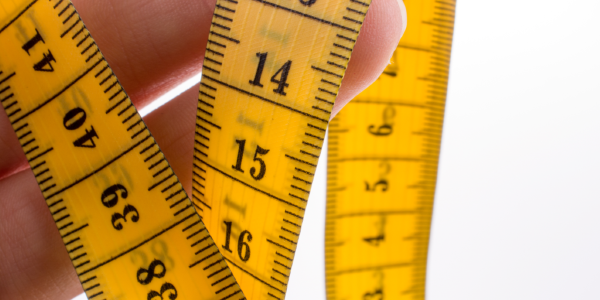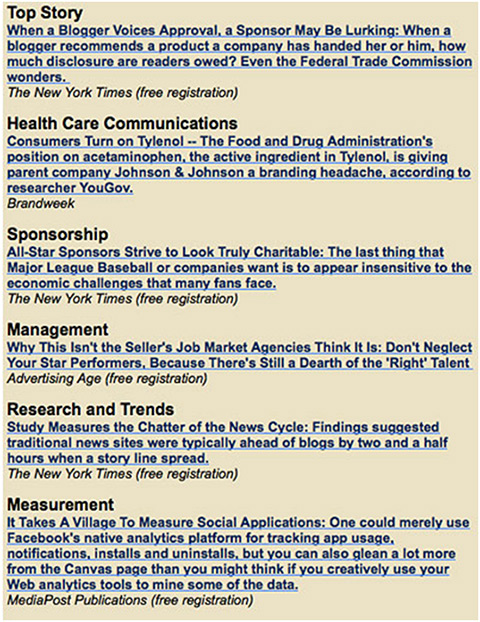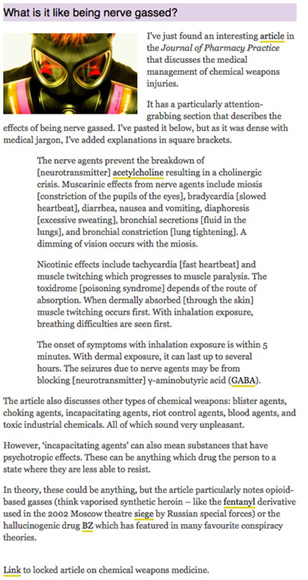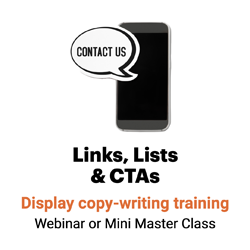Give visitors enough information to decide to click
Think of links as the Goldilocks of microcontent: Some links are too long. Some links are too short. You want to write links that are just right.

Too long
Links are highly scannable. Blue underlined words stand out on a screen of black text on a white background.
But if everything stands out, nothing stands out. If your links are too long, your readers’ eyes may find nothing to land on.
The links in a PR e-zine, for instance, average 35 words. The longest tops out at 54. This one’s 32 words long:
That’s too long.

The solution: Link and bold-face the head; unlink and use plain text for the blurb. Like so:
That approach allows readers to scan headlines, then learn more from the blurb if they find something they like.
Too short
But if your links are too short, readers will have to read the copy around the link to understand what the link means.
Readers find this irritating. Plus, it slows them down, writes Jan H. Spyridakis, professor at the University of Washington College of Engineering.
MindHacks’ one-word links, for instance, are discombobulating. Who would click on article, acetylcholine, GABA, fentanyl, siege or BZ without knowing more?
They’re too short.

The solution: Rewrite sentences to create clusters of linkable words that give the context for the story. Instead of article, for instance, how about:
Or even:
Those five extra words add context, make the link clearer and the story more scannable — and may well increase clicks.
Just right
So how long should a link be?
Make them 7 to 11 words long (PDF), suggests Jared M. Spool, CEO and founding principal of User Interface Engineering.
His research shows that visitors find what they’re looking for more efficiently on sites with:
- Longer links or
- Links followed by descriptive sentences
Visitors were less successful on sites with super-short links.
So “link length is less important than a good link description,” writes Marieke McCloskey, a user experience specialist with Nielsen Norman Group. “Use as many words as you need to accurately describe the page … while still being concise.”
In other words, as with most writing, make the link as long as you must and as short as you can.
But do keep it under 54 words.
____
Sources: Marieke McCloskey, “Writing Hyperlinks: Salient, Descriptive, Start with Keyword,” Nielsen Norman Group, March 9, 2014
Jan H. Spyridakis, “Guidelines for Authoring Comprehensible Web pages and Evaluating Their Success” (PDF), Technical Communications, August 2000
Jared Spool, Tara Scanlon, Will Schroeder, Carolyn Snyder and Terri DeAngelo: Website usability: A designer’s guide (PDF). User Interface Engineering (North Andover, Mass.), 1997

Leave a Reply